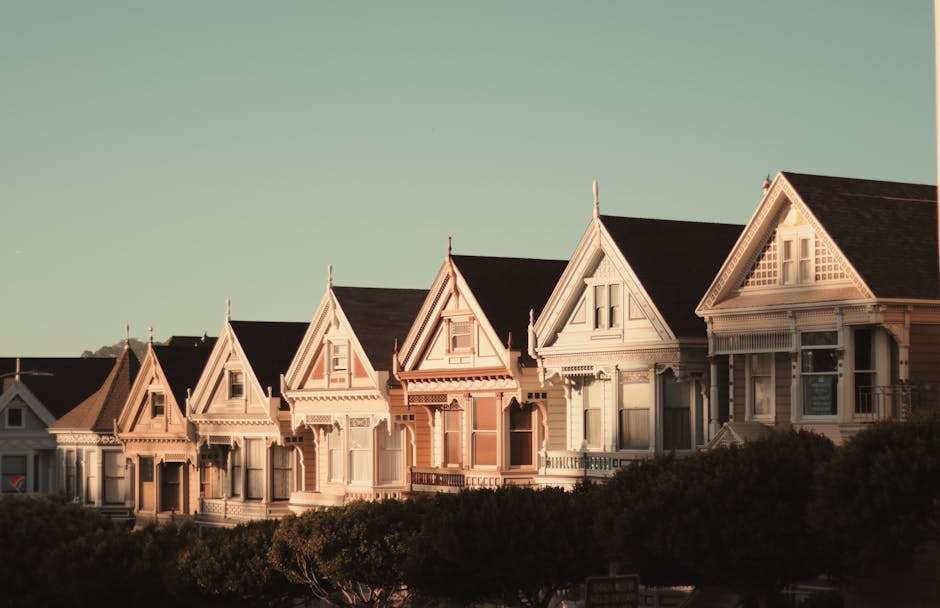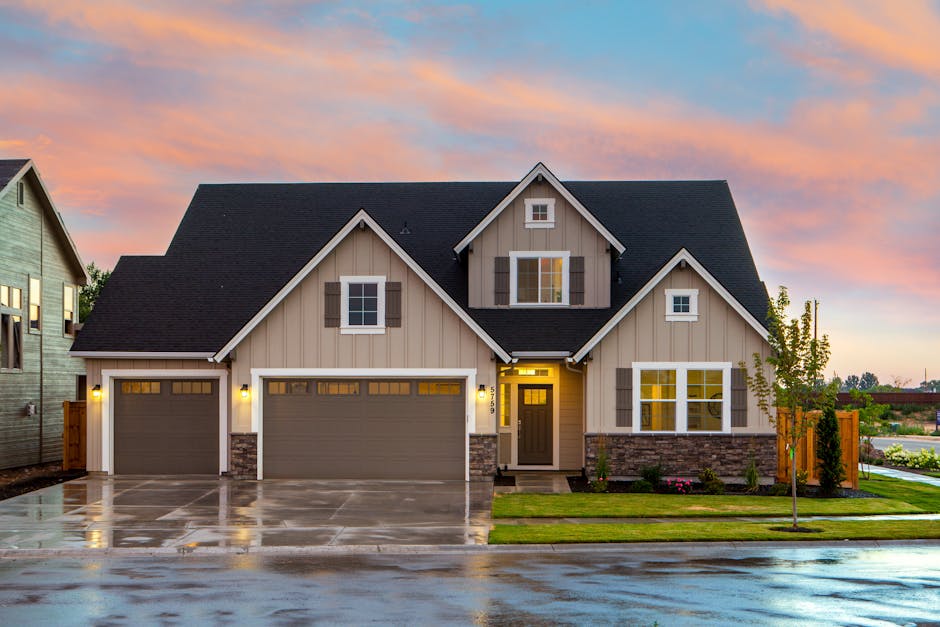What Sets Hip and Gable Roofs Apart? A Detailed Guide

Choosing Between Hip and Gable Roofs: Key Differences Explained
When it comes to the difference between a hip and gable roof, the defining features lie in their slopes and shape. Gable roofs have two triangle-shaped slopes extending from the eaves to the peak, while hip roofs slope down on all sides, often meeting at a central peak. To put it simply, hip roofs provide consistent eaves all around, while gable roofs emphasize two prominent slopes.
Key Differences:
Slopes: Hip roofs slope on all four sides; gable roofs only on two.Appearance: Gable roofs form a triangular shape; hip roofs create a pyramid-like structure.Stability: Hip roofs are more stable in high winds; gable roofs can be more vulnerable.
Choosing the right roof isn’t just about aesthetic preference—it’s about ensuring your home is well-protected against the elements. Both hip and gable roofs offer unique advantages and come with their own sets of considerations. Whether you’re a homeowner in New England, the D.C. area, or Florida, knowing these differences can help you make a more informed decision.
I’m Paul Schneider, insurance expert with experience in explaining the difference between a hip and gable roof. With over 50 years of experience in insurance and roof-related issues, I understand the intricacies that these choices bring. Let’s dig deeper into what each type of roof offers and how they stand up against various challenges.
Understanding Hip Roofs
A hip roof is a popular roofing style known for its unique structure and aesthetic appeal. Unlike gable roofs, which have two triangle-shaped slopes, hip roofs slope down on all sides, meeting at a peak. This design provides several benefits and variations to fit different architectural needs.
Types of Hip Roofs
Pavilion Roof
A pavilion roof, also known as a pyramid roof, is a type of hip roof built on a square structure. All sides of the roof meet at a single peak, forming a pyramid shape. This design is not only visually appealing but also highly stable.
Mansard Roof
The mansard roof, or French roof, features slopes with varying angles. It typically has a flatter top section and steeper lower slopes, creating a multi-surfaced look. This design adds a touch of elegance and increases the usable space within the roof.
Tented Roof
A tented roof is similar to a pavilion roof but is often used for more decorative purposes. It has steeply pitched sides that meet at a high peak, resembling a tent. This style is commonly seen in historical buildings and adds a dramatic flair to the structure.
Dutch Gable Roof
A Dutch gable roof combines elements of both gable and hip roofs. It features a small gable at the peak of a hip roof, providing additional attic space and ventilation. This hybrid design offers the best of both worlds.
Half-Hip Roof
Also known as a clipped gable or jerkin-head roof, a half-hip roof is essentially a gable roof with a small hip section at the end. This design improves stability and adds a unique architectural element to the home.
Pros of Hip Roofs
Stability
One of the main advantages of hip roofs is their stability. The inward slope on all four sides makes them more resistant to high winds and heavy snowfall. This is particularly beneficial for homeowners in areas prone to extreme weather conditions.
Consistent Eaves
Hip roofs provide consistent eaves all around the house, which many homeowners find aesthetically pleasing. This uniform look can improve your home’s curb appeal and make it stand out in the neighborhood.
Low Slopes
Hip roofs are well-suited for low-sloped structures. Their design ensures that water, snow, and debris are effectively shed, even on roofs with a gentler incline.
Wind Resistance
Thanks to their aerodynamic shape, hip roofs perform exceptionally well in high-wind areas. This makes them a popular choice in hurricane-prone regions.
Aesthetic Appeal
The sleek and consistent design of hip roofs adds a modern and sophisticated look to any home. Whether you opt for a pavilion, mansard, or tented roof, the aesthetic benefits are undeniable.
Cons of Hip Roofs
Cost
One of the main drawbacks of hip roofs is their cost. They are generally more expensive to build and maintain than gable roofs. The complexity of their design requires more materials and skilled labor, leading to higher installation costs.
Complexity
Hip roofs are more complex to construct, which can lead to longer build times and increased labor costs. This complexity also means that repairs and maintenance can be more challenging and costly.
Attic Space
Due to their design, hip roofs offer less attic space compared to gable roofs. The inward slopes reduce the usable area, which can be a disadvantage if you need extra storage or living space.
Potential Leaks
Improperly installed hip roofs can be susceptible to leaks, especially around dormers and seams. It’s crucial to hire experienced professionals to ensure proper installation and minimize the risk of water damage.

Understanding the pros and cons of hip roofs can help you make an informed decision when choosing the right roof for your home. Next, let’s take a closer look at gable roofs and how they compare.
Understanding Gable Roofs
Gable roofs are one of the most common and recognizable roof styles in the United States. Their simple design and practicality make them a popular choice for many homeowners. Let’s dive into the details.
Types of Gable Roofs
Open Gable Roof
An open gable roof features two sloping sides that meet at a ridge, forming a triangular shape. The gable, which is the vertical, triangular section, is open and often houses a window or vent. This design is straightforward and efficient.
Box Gable Roof
A box gable roof includes the same two sloping sides but with a boxed-in gable at each end. This design adds a bit more structure and protection to the gable ends, making it more durable in windy conditions.
Cross-Gable Roof
A cross-gable roof combines two or more gable roof sections that intersect at a right angle. This design is often used in homes with complex layouts, adding architectural interest and additional space.
Gambrel Roof
Often seen on barns, a gambrel roof has two slopes on each side, with the lower slope being steeper than the upper one. This design provides more headroom and attic space, making it ideal for homes that need extra storage or living areas.
Saltbox Roof
A saltbox roof is an asymmetrical gable roof with one side longer than the other. This design was popular in colonial New England and adds a unique, historical charm to homes.
Pros of Gable Roofs
Cost-Efficiency
Gable roofs are generally less expensive to build than hip roofs. Their simple design requires fewer materials and less labor, which can save you money.
Ventilation
The steep slopes of gable roofs allow for excellent ventilation. Gable vents can be installed to improve airflow in the attic, helping to regulate temperature and prevent moisture buildup.
Attic Space
Gable roofs provide more attic space compared to hip roofs. The triangular shape creates a vaulted ceiling, offering more room for storage or even additional living space.
Water Shedding
The steep slopes of gable roofs are excellent for shedding water, snow, and debris. This helps to prevent leaks and prolongs the lifespan of the roof.
Simplicity
The straightforward design of gable roofs makes them easier to build and maintain. This simplicity is often appealing to homeowners looking for a no-fuss roofing solution.
Cons of Gable Roofs
Wind Resistance
One of the main drawbacks of gable roofs is their poor performance in high-wind areas. If not properly braced, the gable ends can catch the wind like a sail, leading to potential damage or even roof detachment.
Durability
Gable roofs are less durable than hip roofs in extreme weather conditions. Proper installation and bracing are crucial to ensure their longevity, especially in areas prone to hurricanes or heavy snowfall.
Design Simplicity
While some may appreciate the simplicity of gable roofs, others might find them too plain. The basic design might not offer the same curb appeal as more complex roof styles.
Construction Difficulty
Although the design is simple, constructing a gable roof still requires precision. Any mistakes in the angles or measurements can lead to structural issues and potential leaks.
Understanding the difference between a hip and gable roof is crucial when deciding which is best for your home. While gable roofs offer cost-efficiency and simplicity, their performance in high winds and durability can be a concern. Next, we’ll dig into the specific differences between these two roof types.
Difference Between a Hip and Gable Roof
When choosing between a hip and gable roof, understanding their differences can help you make an informed decision. Let’s break down the key aspects of each roof type.
Design and Structure
Sloping Sides:
Hip Roof: All four sides of a hip roof slope downward towards the walls. This design means no vertical ends, creating a sleek, pyramid-like appearance.Gable Roof: In contrast, a gable roof has only two sloping sides that meet at a ridge, forming a triangular shape. The other two sides are vertical, known as gables.
Vertical Ends:
Hip Roof: No vertical ends; the entire roof consists of sloping sides.Gable Roof: Features two vertical ends, which can house windows or vents.
Roof Peaks:
Hip Roof: The peak is where all four sloping sides meet, often at a single point if the structure is square.Gable Roof: The peak is a horizontal ridgeline where the two sloping sides converge.
Eaves:
Hip Roof: Consistent eaves all around the house, providing a uniform look and better protection against the elements.Gable Roof: Eaves are only present on the two sloping sides, with the vertical gables typically lacking overhangs.
Functionality and Performance
Wind Resistance:
Hip Roof: Superior wind resistance due to the inward slope of all four sides. This aerodynamic design helps the roof withstand high winds better.Gable Roof: More prone to wind damage, especially at the gable ends, which can act like sails and catch the wind.
Snow Shedding:
Hip Roof: Less effective at shedding snow due to the multiple slopes, which can cause snow to accumulate more easily.Gable Roof: Excellent at shedding snow and water because of the steep slopes, reducing the risk of leaks and structural damage.
Ventilation:
Hip Roof: Generally offers less ventilation. Additional vents or dormers may be needed to improve airflow.Gable Roof: Provides better ventilation options with gable vents, helping to regulate attic temperature and moisture.
Attic Space:
Hip Roof: Limited attic space due to the inward sloping sides. This can restrict storage and make attic remodeling more challenging.Gable Roof: Offers more attic space with vaulted ceilings, making it easier to convert the attic into additional living or storage space.
Cost:
Hip Roof: More expensive to build due to the complexity of the design and the need for more materials and skilled labor.Gable Roof: Generally less costly, thanks to its simpler design and construction process.
Understanding these differences can help you decide which roof type suits your needs best. If you live in a high-wind area, a hip roof might be the better option for stability. If you’re looking for cost-efficiency and more attic space, a gable roof could be the way to go.
Next, we’ll dive into some frequently asked questions about the differences between hip and gable roofs.
Frequently Asked Questions about the Difference Between a Hip and Gable Roof
How do I know if I have a hip roof or a gable roof?
Identifying whether you have a hip roof or a gable roof is straightforward once you know what to look for:
Hip Roof: A hip roof has four sides that slope downwards from a peak, and there are no vertical ends. Imagine a pyramid-like shape with consistent eaves all around.Gable Roof: A gable roof features two sloping sides that meet at a ridge, forming a triangular shape at the ends (called gables). The other two sides are vertical.


Which is better, gable or hip roof?
Choosing between a gable or hip roof depends on several factors, including your location, budget, and aesthetic preferences:
Wind Resistance: Hip roofs are better in high-wind areas due to their inward sloping sides, which makes them more stable and less prone to wind damage. Gable roofs, with their vertical ends, can act like sails and catch the wind, making them more susceptible to wind damage.
Cost: Gable roofs are generally less expensive to build because of their simpler design and construction process. Hip roofs are more costly due to their complexity and the need for more materials and skilled labor.
Stability: Hip roofs offer better stability, especially in regions prone to hurricanes or heavy winds, thanks to their self-bracing design.
Aesthetic Appeal: This is subjective. Hip roofs provide a sleek, uniform appearance, while gable roofs offer a classic, straightforward look.
What are the main differences between a gable roof, a hip roof, and a flat roof in terms of design and functionality?
Comparing gable roofs, hip roofs, and flat roofs reveals distinct differences in design and functionality:
Design:Gable Roof: Features two sloping sides and two vertical ends, forming a triangular shape.Hip Roof: All four sides slope downwards, meeting at a peak, with no vertical ends.
Flat Roof: Has a single horizontal surface with a slight slope for drainage.
Attic Space:
Gable Roof: Offers more attic space and can accommodate vaulted ceilings, making it easier to convert the attic into additional living space.Hip Roof: Limited attic space due to the inward sloping sides.
Flat Roof: Generally no attic space, but can be used for rooftop gardens or terraces.
Water Shedding:
Gable Roof: Excellent at shedding water and snow due to the steep slopes.Hip Roof: Effective but less so than gable roofs because of the multiple slopes.
Flat Roof: Requires proper drainage systems to prevent water accumulation.
Wind Resistance:
Gable Roof: More prone to wind damage, especially at the gable ends.Hip Roof: Superior wind resistance due to the aerodynamic design.
Flat Roof: Vulnerable to wind uplift but can be reinforced with proper anchoring.
Construction Cost:
Gable Roof: Generally less costly due to simpler design and fewer materials required.Hip Roof: More expensive because of the complex construction.Flat Roof: Can be cost-effective but may require more maintenance and proper drainage solutions.
Understanding these differences can help you choose the right roof for your needs and location. Next, we’ll explore more about how to select the best roof type for your home.
Conclusion
Choosing between a hip and gable roof can be challenging, but understanding the key differences and factors can help you make an informed decision.
Summary
Hip roofs have four sloping sides, making them more stable and wind-resistant. They offer a sleek, uniform appearance but come with higher costs and less attic space. Gable roofs have two sloping sides and two vertical ends, forming a triangular shape. They are cost-effective, provide better attic space, and excel in snow shedding but are less wind-resistant.
Decision Factors
When deciding between a hip and gable roof, consider the following:
Location: If you live in a high-wind or hurricane-prone area, a hip roof may be a better choice due to its stability.Budget: Gable roofs are generally less expensive to build and maintain.Aesthetic Preferences: Hip roofs offer a consistent, sleek look, while gable roofs provide a classic, straightforward appearance.Functionality: Think about attic space, ventilation, and how well the roof will perform in your local climate.
Schneider and Associates Insurance Agencies
At Schneider and Associates Insurance Agencies, we understand that choosing the right roof is crucial for your home’s protection and value. Our team is here to provide you with personalized insurance solutions custom to your specific needs, whether you opt for a hip or gable roof.
We offer custom coverage that considers your unique situation, ensuring comprehensive protection without unnecessary extras. Our local touch means we are familiar with the specific risks and requirements of different areas, giving you expert advice and support.
Ready to protect your home? Get a quote today and let Schneider and Associates Insurance Agencies take care of your insurance needs.







